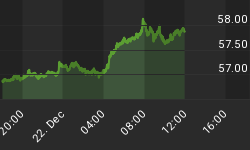Fed's Fisher Down On QE

The Federal Reserve has signaled to the markets that economic data would have to veer significantly off their anticipated path to terminate the Fed's tapering process. Some additional taper-friendly remarks were made this week. From Reuters:
A U.S. Federal Reserve policymaker who has long criticized its bond-buying stimulus said on Wednesday the program has lasted too long, and there are signs it is now distorting financial markets and encouraging risk-taking. In a speech in Mexico City, Dallas Fed President Richard Fisher amplified some lingering concerns that the central bank's policy stimulus is stoking asset-price bubbles that "may result in tears" for investors acting on bad incentives. "There are increasing signs quantitative easing has overstayed its welcome: Market distortions and acting on bad incentives are becoming more pervasive," he said of the asset purchases, which are sometimes called QE. "I fear that we are feeding imbalances similar to those that played a role in the run-up to the financial crisis," he said in prepared remarks to the Association of Mexican Banks.
2007: Would I Rather Be Long Or Short Stocks?
The weekly chart below shows the performance of longs (SPY) relative to shorts (SH). When the ratio rises, we would "rather be long" and when the ratio falls, the short side of the market is outperforming the long side. The weekly chart helps us stay with the dominant trend by filtering out some distracting day-to-day volatility present on a daily chart. The red and blue lines are moving averages which filter out some of the week-to-week volatility, allowing us to focus on the dominant weekly trend. Was the long vs. short chart helpful in 2007 when the stock market peaked? Yes, the chart took on an "I'd rather be short look" in October 2007 with the S&P still trading above 1,500. The S&P 500 did not find a bottom until reaching 666 in March 2009.

2014: What Is The Ratio Telling Us Now?
The chart continues to maintain an 'I'd rather be long stocks" look: (a) price is above the red and blue moving averages, and (b) the slopes of the red and blue moving averages are positive.

Investment Implications - The Evidence In Hand Is Bullish
Since bullish utopia never exists in the financial markets, our market model makes allocation decisions based on the weight of the evidence. The weight of the evidence aligns with the current bullish look of the long vs. short ratio. Consequently, we continue to hold U.S. stocks (SPY) and technology stocks (QQQ) as core portfolio positions. Unless the reaction to Friday's employment report brings buying support for bonds, we will consider reducing our already small exposure to Treasuries (TLT) Friday. The market's reaction to the employment report is more important than the report itself. In the first four trading days of the five day week, the S&P 500 tacked on 17 points. Over the same period, the Aggregate Bond ETF (AGG) dropped 0.28%, telling us the demand for defensive assets continues to lag the demand for growth assets; that needs to change before the stock bears make any significant progress.
A Small Step For Ukraine
While market fear related to Ukraine has subsided a bit, it is still prudent to keep an eye on Mr. Putin. The House voted on Ukrainian aid this week. From MarketWatch:
The House of Representatives on Thursday easily approved legislation that would extend financial aid to Ukraine. The bill allows Ukraine up to $1 billion in loan guarantees, which the bill's sponsors say cover the risk of losses if Ukraine defaults. The vote was 385-23. Both chambers of Congress would need to approve the loan guarantees and the Senate is still working on its bill.















